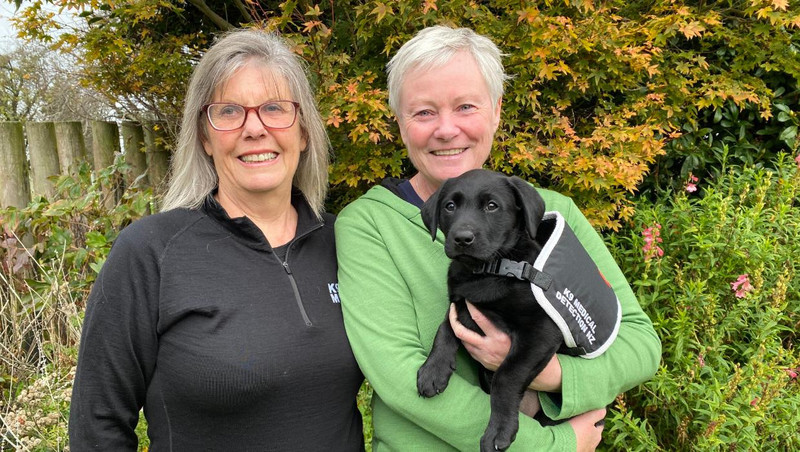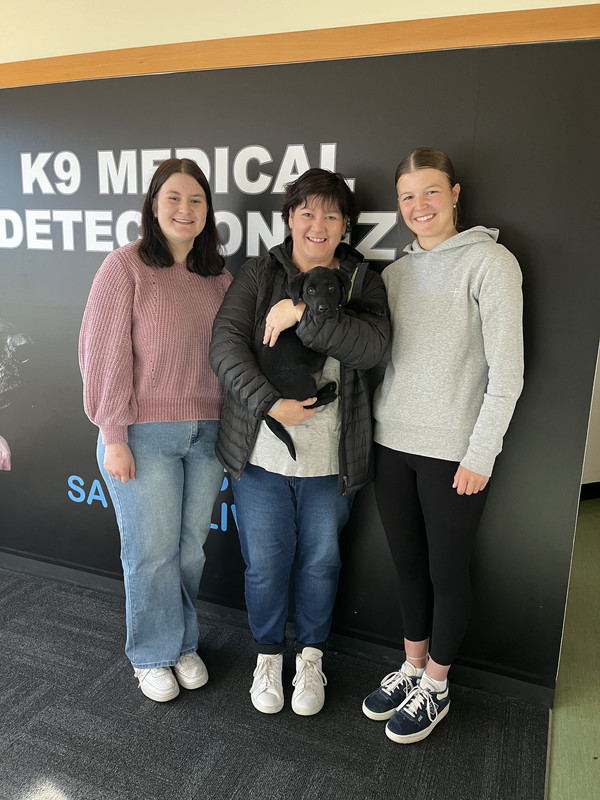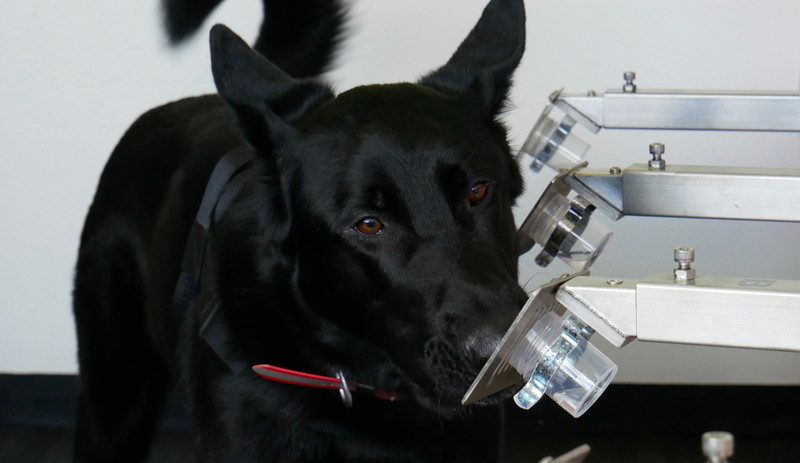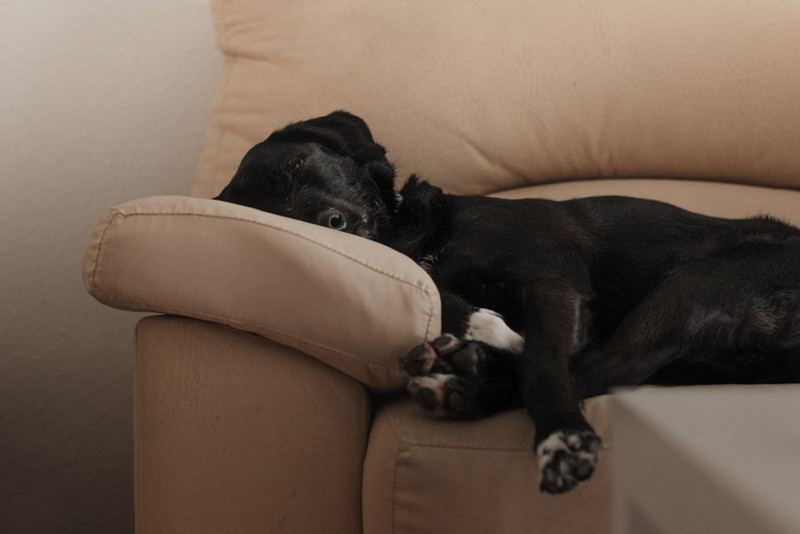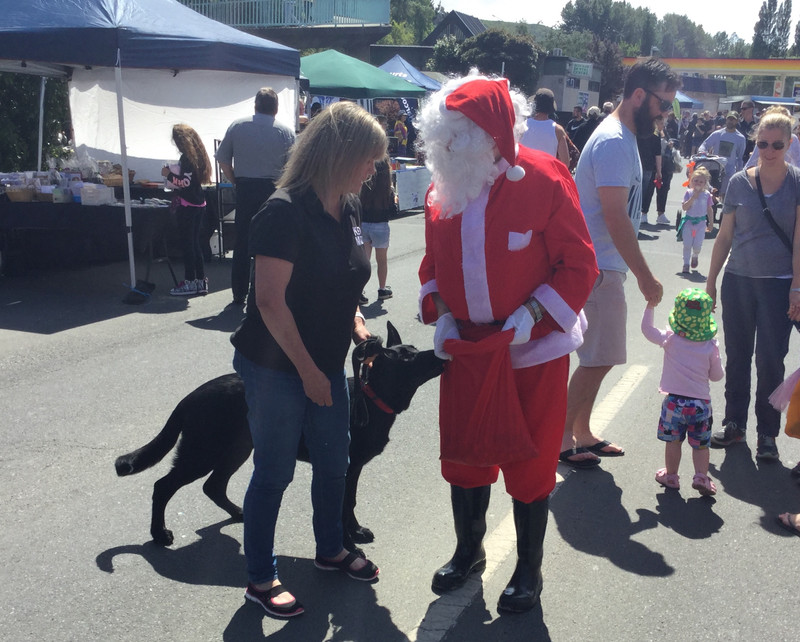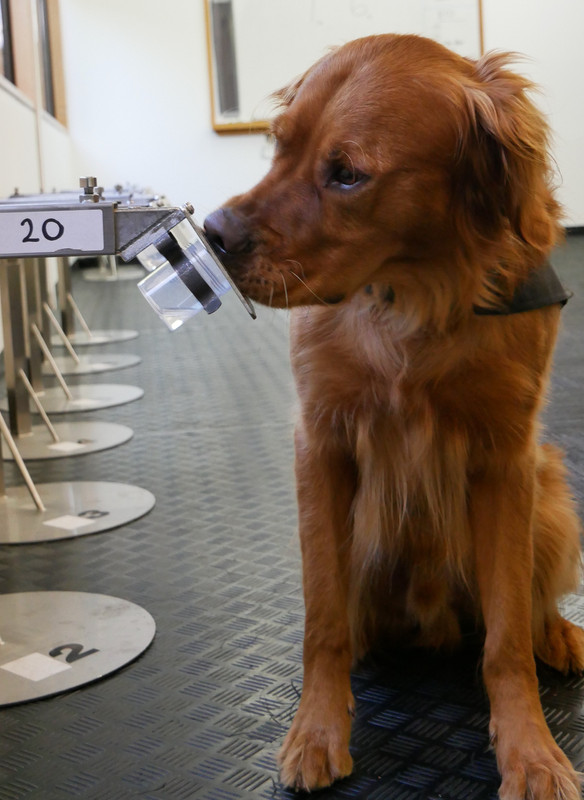Dog Blog Issue Six
ALL EYES ON SKYE
Under the watchful eye of the media, Skye was officially handed over to K9MD’s Chief Executive Pauline. Skye left her siblings and her first home with Claire from Flagstaff Kennels in Invercargill and travelled to Dunedin.
She is settling in well, and has met her new foster family for the first time. Such big changes for our little one, with an exciting life ahead, full of discoveries and lots to learn. As we’ve said in previous issues of the Dog Blog, these early days are crucial to ensure Skye has positive experiences to carry forward into her adult life, because who she becomes is shaped by what she encounters now. This is worth remembering when we consider how important we hope Skye will become to the K9MD team in detecting early stage cancer.
Skye’s foster mum, Nikki, says Skye is already using that amazing nose of hers to sniff out the lay of the land, places and people. She can tell what people feel about her from their tone of voice and their body language, but also from sniffing them - our scent gives us away! So, she’ll know she is loved and that the humans around her are good people who want to look after her.
But is she simply born to sniff, and is it that, that makes her a good detection dog, or is there more to being a good detection dog than just having a good nose?
WHAT’S THE DIFFERENCE BETWEEN A WORKING DOG AND A PET DOG?
A working dog is selected for its genetic heritability to be trained to perform specific tasks.
A working dog has high energy levels, a high level of confidence and intelligence.
A working dog requires mental stimulation and a structured outlet for their energy.
A working dog LIVES to work. The most important thing in their life must be their work.
A pet dog is selected for their looks, size and possible traits for family life.
A pet dog normally has unrestricted freedom, limited rules and spends most of its time with family (often on the couch). Their sole purpose being companionship.
A pet dog can sleep up to 18 hours a day (often on the couch) and providing its basic welfare needs are met i.e. food, water, exercise, bedding (couch), a pet dog is content.
A pet dog is not required to offer precision with their life. Providing they learn to comply with simple house rules they become valuable companions.
There are numerous scientific papers that have found that there is no discernible difference in the abilities of different breeds of dog to perform scent work that can be laid at the feet of being simply bred as a scent hound. A recent article on Genetic and anatomical determinants of olfaction in dogs and wild canids, published this year by a group of scientists from various universities in the US, determined that superior scent detection dogs likely owe their success to advantageous behavioural traits and training rather than an “olfactory edge” provided by genes.
INHERITED BEHAVIOUR
All behaviour is genetically conditioned; no behavioural trait can develop without a genetic disposition for it. Behaviour is then the result of the animals’ genetic disposition when or after it has been influenced by the environment. We may inhibit or promote certain traits in an animal by means of the appropriate, or inappropriate environment for the development of that particular trait.
It’s therefore impossible to say there are certain genes for certain behaviours, but rather there are certain genes which allow for the development of specific behaviour under specific conditions. We select our medical detection dogs by their genetics. We want a dog with proven working lines, to be placed in a specific environment to create a specific behaviour.
TALL BLACKS
Just as being born tall doesn’t make you a shoo-in as a basketball star, being born with a nose designed for scent work doesn’t necessarily make you a great member of the K9MD NZ canine team. So, what does Skye’s superior genetic bloodline play in all this? What will our little pup Skye need to do to prove herself over the coming year, and how will her trainers help her to develop her skills?
Let’s look first at the genetics part of the equation. Dogs are born to sniff, that’s a given. An article published in 2020,The Science of Sniffs: Disease smelling dogs, tells us that dogs have about 225 million scent receptors, compared to about 5 million in humans. They can smell things we don’t even know exist, because they have scent receptors that are 10,000 times more accurate than humans. Dogs inhale up to 300 times per minute in short breaths, meaning that their olfactory cells are constantly supplied with new odour particles, and their noses sniff in stereo so they can differentiate between right and left. Dogs’ sense of smell is so subtle that they can notice the slightest change in human scent caused by disease. The tiniest shifts in hormones or volatile organic compounds released by diseased cells can be picked out by dogs.
These genetic traits should make dogs ideal candidates for cancer detection work. But as we said, we can’t all be Tall Blacks.
If a dog is hyperactive and has the attention span of a gnat, or if they’d rather lounge around on the couch all day than play, they are not going to make a great team player. Being a good detection dog requires the ability to focus on an often repetitive task, enthusiasm for the work, and a strong bond with their trainer, just like top athletes. So, no, not every dog can become a good detection dog.
K9MD dogs come from carefully selected blood lines. Their family trees are populated with those dogs with the best temperaments - friendly, calm, attentive, independent, inquisitive - and science confirms that these traits are possible to identify and encourage through selective breeding. We look forward to watching Syke grow.

